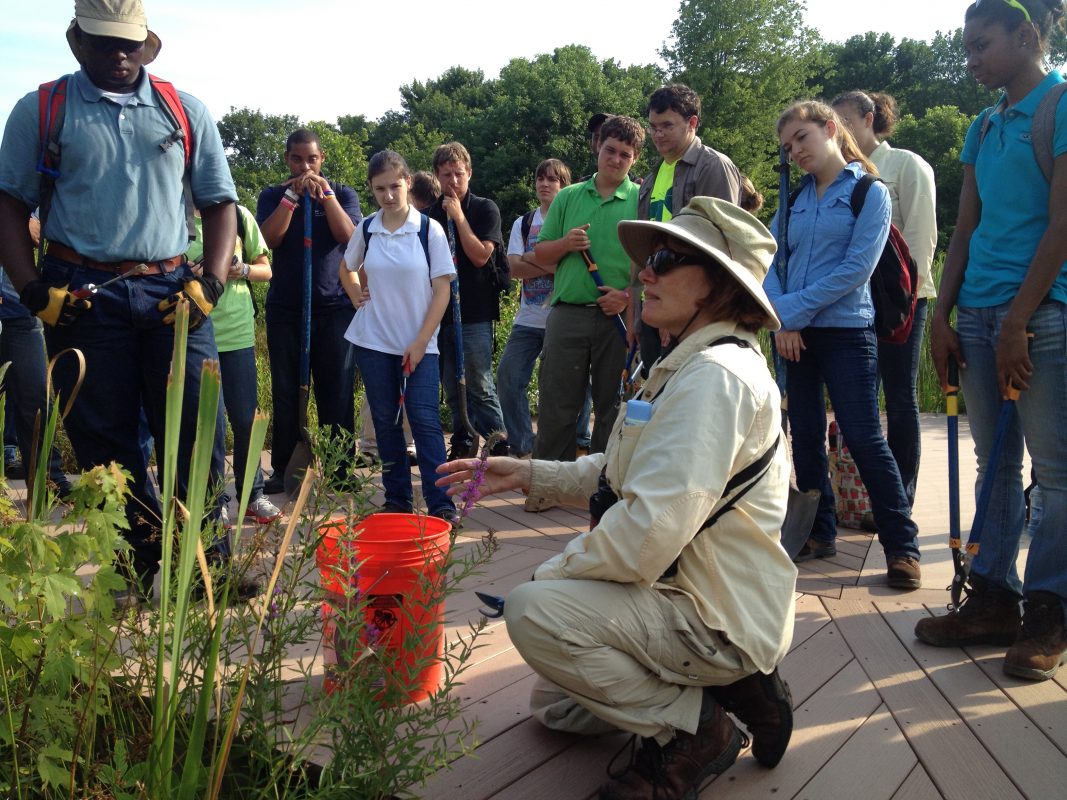Delivering a Successful Program through Training
The key to a successful voluntary stormwater BMP program is having a team of well-trained assessors, designers, inspectors, installers, program managers, and other individuals who work toward the program’s objectives. As stormwater BMP retrofitting is becoming more commonplace and nutrient reduction credits are being allocated to BMPs at the residential scale, the demand for a unique kind of training (beyond state level regulatory training) is increasing. Local government officials, landscape designers and contractors, volunteers, non-profit employees and others will all need to be trained for this growing activity.
This chapter will discuss the elements we have found necessary to effectively train those involved in the implementation of your homeowner stormwater BMP program. Every team member must know how the program is structured and the core elements of each component, even though their individual roles and expertise within the program will vary. Each member of the program team should be trained to carry out tasks efficiently and effectively to ensure consistency of program execution.

Image courtesy: www.flickr.com
Section 6.1: Program Roles
The distribution of responsibility for each role within the program will vary from one program to another. Some programs may have different individuals leading each specific component of the program, while other programs may rely on one individual to guide all efforts and delegate when needed. The program workloads can be broken into four specific roles that are described in more detail in the manual:
- Program Administrator
- Assessor
- Designer/Installer
- Inspector/Verifier
Section 6.2: Training Program Components
Depending on the complexity of your program, several sessions may be needed to train your partners about programmatic needs, processes, and requirements. The audience will vary dramatically when it comes to their levels of experience and their various program roles (as outlined in the previous section). To more effectively train staff and partners, the RiverWise Communities training program is delivered in two components targeting four specific groups, based on the program roles described in the previous sections.
The first training component is “classroom” training, focusing on providing knowledge, skills and tools needed to succeed in the program. The second component is “in the field” training. This should be devoted to showing trainees exactly what it takes to get the job done. The two components are equally important, since some individuals thrive in a “classroom” setting while others learn best through “hands-on” experience in the field.
Classroom Presentations
Computer presentation programs such as PowerPoint and Prezi offer a great way to deliver your message in a concise, organized, and engaging manner. Usually this component of the training can be completed in 4-6 hours. This time is used to give your trainees the knowledge base to be successful in the field. The RiverWise Communities training program focuses on five elements of a successful program, as follows:
- Organization and Program Background
- Hydrology
- Stormwater BMPs
- Program Implementation
- Property Assessment
Field Presentations
The second phase of training and is the field component. Field training should be conducted shortly after classroom training, so you may relate the classroom material to on-site practice. Field exercises will likely have the greatest impact on trainees. Providing time to demonstrate certain tools and practices is essential.
The content of the field training will most likely change from one group to another. The assessors should work through the assessment form and techniques while the designers/installers and inspectors/verifiers will review installed BMPs and BMPs currently under construction. Plan a site visit to a BMP installation site if possible, so the trainees can gain real-world perspective and experience. The following is a description of field training content for specific audiences. The program administrator should have training in all components of field work to assist each group as needed.